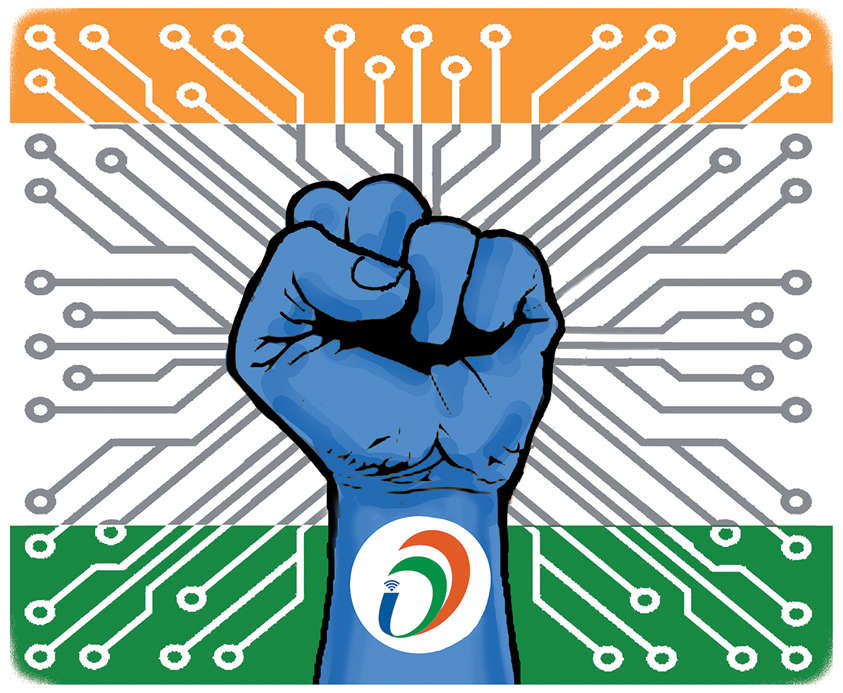
How EdTech Is Bridging the Urban-Rural Divide
EdTech is revolutionizing education by closing the urban-rural divide through digital access, interactive content, and teacher support. By overcoming geographical and infrastructural barriers, it provides rural students with quality learning opportunities. Challenges remain around connectivity and affordability, but government initiatives and emerging technologies like AI and offline tools continue to expand access. EdTech holds the promise of equitable, inclusive education, empowering rural co
✨ Raghav Jain

Introduction
Education is the foundation of progress and opportunity. Yet, a persistent challenge worldwide, especially in countries like India, is the urban-rural divide in educational access and quality. Rural areas often face limited infrastructure, fewer qualified teachers, and less exposure to diverse learning resources. This gap creates inequality in opportunities for millions of children and adults.
Enter EdTech (Educational Technology) — a revolutionary solution transforming how education is delivered and accessed. By leveraging digital tools, online platforms, and mobile connectivity, EdTech is breaking geographical, economic, and social barriers to learning. It is creating new pathways for rural learners to access quality education, skill development, and lifelong learning opportunities.
In this article, we’ll explore how EdTech is bridging the urban-rural divide, its impact on students and communities, the challenges it faces, and practical ways it can be further harnessed to create equitable education for all. Educational technology, or EdTech, is emerging as a powerful force in bridging the historical divide between urban and rural education. For decades, students in rural areas have often faced significant disadvantages, including a lack of qualified teachers, limited resources, outdated infrastructure, and geographical isolation. EdTech is changing this by using technology to create more equitable access to high-quality learning, effectively bringing the classroom to remote communities. This transformation is driven by several key factors and innovative solutions that are reshaping the rural education landscape.
One of the most profound ways EdTech is bridging the gap is by providing access to expert educators and diverse learning materials. Rural schools often struggle to attract and retain experienced teachers, leading to teacher shortages and large student-to-teacher ratios. EdTech platforms address this by connecting students in remote villages with skilled teachers from urban centers through virtual classrooms and online courses. Students can access live sessions, recorded lectures, and a vast library of interactive videos and e-books, providing them with a quality of education previously unavailable. Platforms like Khan Academy, for instance, offer a wealth of free learning materials, ensuring that students can access high-quality content without the need for expensive textbooks or private tutoring.
Another critical innovation is the development of mobile-first and offline-friendly solutions. While the digital divide remains a challenge, smartphone penetration and growing internet access are becoming more common in rural areas. EdTech companies are capitalizing on this by designing learning applications specifically for mobile devices. Furthermore, many platforms offer offline features that allow students to download content when they have an internet connection and use it later, mitigating the issue of unreliable connectivity. This ensures that learning can continue uninterrupted, even in areas with limited or no internet access. Some initiatives have even focused on creating low-cost, solar-powered learning solutions and interactive whiteboards for schools that lack reliable electricity, overcoming a major infrastructural barrier.
EdTech is also making education more personalized and inclusive. Traditional rote-learning methods, still prevalent in some rural classrooms, often fail to cater to diverse learning needs. AI-powered adaptive learning platforms can tailor educational content to an individual student's pace and learning style, identifying and addressing learning gaps in real-time. This level of personalized instruction can significantly improve student outcomes. Furthermore, many platforms are increasingly providing content in regional and local languages, which is a major step toward fostering inclusivity and enhancing comprehension for non-English-speaking students. This linguistic localization ensures that students can learn in a language they are comfortable with, making education more accessible and effective.
Finally, EdTech is empowering both students and teachers with digital literacy and essential skills for the future. By exposing rural students to technology from an early age, these programs help them develop critical skills like problem-solving and digital communication, which are vital for future success in a digital economy. For teachers, EdTech provides valuable professional development opportunities, offering them online resources and training to enhance their pedagogical skills and stay updated on new teaching methodologies. This not only improves the quality of instruction but also helps to retain and empower teachers in isolated communities. The successful implementation of EdTech, however, still relies on collaborative efforts between governments, private companies, and NGOs to expand digital infrastructure, provide devices, and ensure digital literacy training for both students and parents
Understanding the Urban-Rural Education Divide
The divide is marked by:
- Infrastructure Gaps: Rural schools often lack proper classrooms, labs, and libraries.
- Teacher Shortage: Fewer trained and experienced teachers serve rural areas.
- Limited Learning Resources: Textbooks, digital tools, and extra-curricular programs are scarce.
- Connectivity Issues: Internet and electricity access can be unreliable or absent.
- Socioeconomic Barriers: Poverty, language differences, and cultural factors affect attendance and engagement.
This results in lower literacy rates, higher dropout rates, and limited career opportunities for rural learners compared to their urban counterparts.
What is EdTech?
EdTech combines technology and education to create innovative learning experiences. It includes:
- Online classes and video lectures
- Interactive apps and games
- Virtual labs and simulations
- Mobile learning platforms
- AI-based personalized learning
- Digital assessments and feedback
EdTech enables learners to study anytime, anywhere, at their own pace and often at lower costs.
How EdTech Bridges the Urban-Rural Divide
1. Expanding Access to Quality Content
Digital platforms provide access to the best teachers and educational resources without physical boundaries. Students in remote villages can watch live or recorded lessons from expert educators, leveling the playing field.
2. Overcoming Infrastructure Limitations
Where schools lack labs or libraries, virtual labs and e-books can fill the gap. Tablets and smartphones bring a world of knowledge directly into rural homes and classrooms.
3. Personalized Learning Experiences
AI-driven tools analyze student progress and adapt lessons to individual needs, addressing learning gaps often neglected in large rural classrooms.
4. Language and Cultural Relevance
Many EdTech platforms offer multilingual content and culturally sensitive examples, making learning more relatable for rural students.
5. Skill Development & Vocational Training
Beyond traditional schooling, EdTech offers courses in digital literacy, agriculture, entrepreneurship, and other skills vital for rural economies.
6. Teacher Training and Support
EdTech empowers rural teachers with continuous professional development via online workshops, peer communities, and teaching aids.
7. Community Engagement and Parental Involvement
Mobile notifications, parent portals, and local language communications help engage families in their children’s education.
Impact of EdTech on Rural Education
- Increased enrollment and attendance
- Improved learning outcomes and test scores
- Greater motivation and engagement among students
- Empowered teachers with better teaching tools
- Enhanced digital literacy for rural youth
- Opportunities for higher education and employment
- Reduced dropout and gender gap in education
Challenges and Barriers to EdTech Adoption in Rural Areas
- Internet Connectivity: Many rural areas still lack reliable broadband or 4G/5G access.
- Device Availability: Smartphones or tablets may be limited due to cost.
- Digital Literacy: Students, parents, and teachers may lack necessary digital skills.
- Electricity Issues: Power outages hamper consistent use of devices.
- Language Limitations: Some platforms don’t offer content in local dialects.
- Cultural Resistance: Traditional mindsets may undervalue digital learning.
Daily Practices to Promote EdTech in Rural Communities
Morning
- Encourage students to access short video lessons via mobile or community center devices
- Parents discuss learning goals with children
Midday
- Conduct offline group study sessions or practice quizzes
- Teachers attend online training or resource sharing
Evening
- Use mobile apps for vocabulary, math, or language games
- Parents review child progress via SMS or app reports
Weekly EdTech Engagement Habits
- Organize community digital learning meetups
- Teachers upload recorded lessons or interactive homework
- Students participate in online competitions or quizzes
- Local leaders promote EdTech benefits via village gatherings
- Conduct digital literacy workshops for parents and elders
Myths About EdTech in Rural Areas: Busted!
“EdTech is only for urban students with high-speed internet.”
→ False! Many platforms offer offline modes, downloadable content, and work on low-bandwidth networks.
“Rural teachers will be replaced by technology.”
→ Wrong! EdTech complements teachers, giving them better tools and training, not replacing them.
“Kids will get addicted to screens with EdTech.”
→ Responsible use guided by parents and teachers keeps screen time healthy and productive.
“Rural parents don’t want digital education.”
→ Many parents value education deeply and welcome innovations when explained clearly.
Future Directions: Making EdTech Work Better for Rural India
- Infrastructure Development: Expanding affordable internet and electricity access
- Affordable Devices: Subsidies or shared device programs for rural students
- Localized Content: More courses in regional languages and culturally relevant topics
- Hybrid Models: Combining digital learning with in-person community support
- Policy Support: Government and NGOs driving EdTech adoption in rural schools
- Teacher Empowerment: Continuous digital training and motivation
Conclusion
EdTech is not just a technology trend but a transformative tool that is actively bridging the urban-rural education divide. It is unlocking opportunities, enhancing quality, and democratizing learning for millions of rural students who once had limited access.
While challenges remain, the blend of innovation, infrastructure, and community involvement can ensure every child, regardless of location, has a fair chance at quality education and a brighter future.
Whether you are a parent, teacher, policymaker, or student—embracing and supporting EdTech can be a key step toward educational equity and social progress.
Start exploring EdTech solutions today. Because education is a right, not a privilege. And with technology, it can truly be for all.
Q&A Section
Q1:- What is EdTech and how does it function?
Ans :- EdTech refers to educational technology that uses digital tools and platforms to enhance learning experiences, making education more accessible, engaging, and personalized.
Q2:- How does EdTech help bridge the urban-rural education gap?
Ans :- By providing online courses, virtual classrooms, and digital resources, EdTech enables rural students to access quality education similar to their urban counterparts despite geographic barriers.
Q3:- What role does internet connectivity play in EdTech’s success in rural areas?
Ans :- Reliable internet access is crucial for streaming lessons and using interactive tools, so expanding broadband infrastructure is key to EdTech’s rural impact.
Q4:- How do mobile learning apps contribute to education in rural communities?
Ans :- Mobile apps allow learners to study anytime, anywhere, often offline, making education flexible and convenient for students with limited resources.
Q5:- In what ways does EdTech support teachers in rural schools?
Ans :- It provides training, lesson plans, and assessment tools, empowering teachers to improve teaching quality and better engage their students.
Q6:- How does EdTech promote inclusive education for marginalized groups in rural regions?
Ans :- Through adaptive learning and multilingual content, EdTech caters to diverse learning needs, including differently-abled students and those speaking regional languages.
Q7:- What challenges does EdTech face in effectively serving rural populations?
Ans :- Limited infrastructure, lack of digital literacy, and affordability issues can hinder EdTech adoption and impact in remote areas.
Q8:- How have government initiatives enhanced EdTech penetration in rural education?
Ans :- Governments support digital literacy programs, subsidize devices, and expand connectivity, creating a conducive environment for EdTech growth.
Q9:- What impact has EdTech had on student performance and motivation in rural schools?
Ans :- Access to interactive content and personalized learning paths has improved engagement, comprehension, and academic outcomes among rural learners.
Q10:- What future trends in EdTech could further narrow the urban-rural divide?
Ans :- AI-driven personalized tutoring, offline-first platforms, and increased local language content promise to deepen EdTech’s reach and effectiveness in rural education.
Similar Articles
Find more relatable content in similar Articles

Digital India: How Technology ..
Digital India leverages techn.. Read More

Daily.dev* – Developer-focused..
Daily.dev is a developer-focus.. Read More

Technazo* – Fresh tech trends,..
Technazo is a dynamic platform.. Read More

MakeAnAppLike – Shares trendin..
“MakeAnAppLike is a comprehens.. Read More
Explore Other Categories
Explore many different categories of articles ranging from Gadgets to Security
Smart Devices, Gear & Innovations
Discover in-depth reviews, hands-on experiences, and expert insights on the newest gadgets—from smartphones to smartwatches, headphones, wearables, and everything in between. Stay ahead with the latest in tech gear
Apps That Power Your World
Explore essential mobile and desktop applications across all platforms. From productivity boosters to creative tools, we cover updates, recommendations, and how-tos to make your digital life easier and more efficient.
Tomorrow's Technology, Today's Insights
Dive into the world of emerging technologies, AI breakthroughs, space tech, robotics, and innovations shaping the future. Stay informed on what's next in the evolution of science and technology.
Protecting You in a Digital Age
Learn how to secure your data, protect your privacy, and understand the latest in online threats. We break down complex cybersecurity topics into practical advice for everyday users and professionals alike.
© 2025 Copyrights by rTechnology. All Rights Reserved.